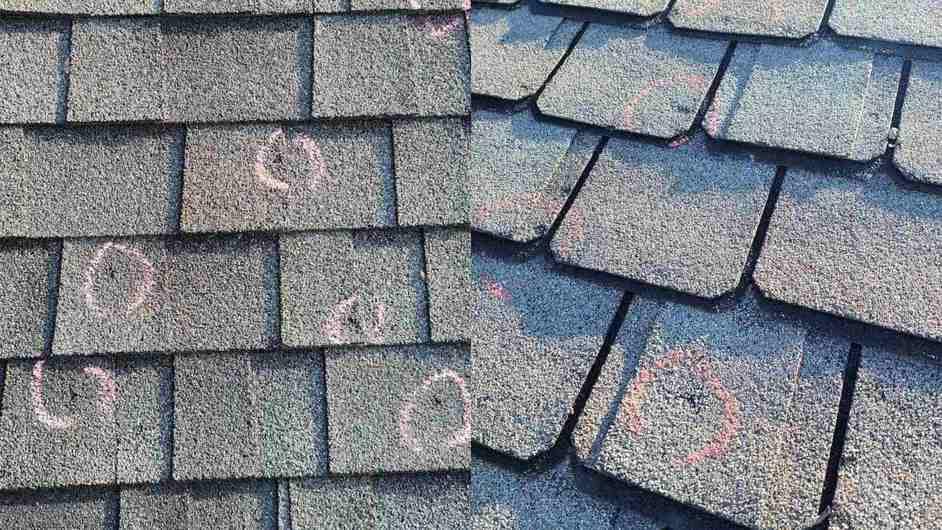Hailstorms can be a homeowner’s worst nightmare, causing significant damage to properties, including roofs. If your roof has been pummeled by hail, you might be wondering how much damage is needed for your insurance to cover a roof replacement. In this article, we will delve into the factors that determine whether hail damage qualifies for a roof replacement through insurance, the inspection process, and steps to take if your roof is indeed eligible for replacement.

Understanding Hail Damage to Roofs
1. Types of Damage
Hail can cause various types of damage to a roof, including:
- Dented or Cracked Shingles: Hailstones can create dents, cracks, or punctures in roofing shingles.
- Granule Loss: The impact of hail can lead to the loss of granules on asphalt shingles, exposing the underlying material to UV rays and weathering.
- Felt Damage: The felt or underlayment beneath the shingles can be damaged by hail, compromising the roof’s integrity.
- Flashing Damage: Hail can damage the flashing around vents, chimneys, and skylights, increasing the risk of leaks.
2. Impact on Roof Lifespan
Even minor hail damage can affect the lifespan and performance of your roof. Over time, untreated hail damage can lead to water leaks, structural issues, and the need for a roof replacement.
Does Hail Damage Qualify for a Roof Replacement?
Whether hail damage qualifies for a roof replacement through insurance depends on several factors:
1. Severity of Damage*
The extent and severity of the hail damage play a crucial role in determining eligibility. In most cases, damage that compromises the roof’s functionality or lifespan may qualify.
2. Insurance Policy*
Review your homeowner’s insurance policy to understand the terms and coverage related to hail damage. Some policies may have specific criteria or deductibles for hail-related claims.
3. Age of the Roof*
The age of your roof is a consideration. Older roofs may be more prone to damage and may have a shorter lifespan, making them more likely to qualify for replacement.
4. Local Climate and Laws*
Hail-prone regions may have different insurance regulations and standards for hail damage claims. Familiarize yourself with local laws and regulations.
The Inspection Process
When you suspect hail damage to your roof, follow these steps:
1. Contact Your Insurance Company*
Notify your insurance company about the potential hail damage. Provide them with essential information, including policy details and the date of the hailstorm.
2. Schedule a Professional Inspection*
Request a professional roof inspection by a licensed and experienced roofing contractor. They will assess the extent of the damage and provide a detailed report.
3. Document the Damage*
Document the hail damage with photographs and videos. Include close-up shots of damaged areas and capture the entire roof’s condition.
Steps to Take If Eligible for Roof Replacement
If your inspection reveals that your roof qualifies for replacement due to hail damage, follow these steps:
1. File an Insurance Claim*
Contact your insurance company and initiate the claim process. Provide them with the inspection report and documentation of the hail damage.
2. Choose a Reputable Contractor*
Select a reputable roofing contractor experienced in insurance claims and roof replacements. Obtain multiple estimates and consider the contractor’s reputation, licensing, and insurance.
3. Coordinate with Your Insurance*
Work closely with your insurance company and the chosen contractor to ensure a smooth and timely roof replacement process.
Conclusion
Hail damage to your roof can be a significant concern, but understanding the criteria for insurance coverage can help ease the process of repair or replacement. The severity of the damage, your insurance policy, and local regulations all play a role in determining eligibility. If your roof does qualify for replacement, promptly file a claim, schedule a professional inspection, and work with a reputable contractor to restore the integrity of your roof and protect your home from further damage.



Leave a Reply